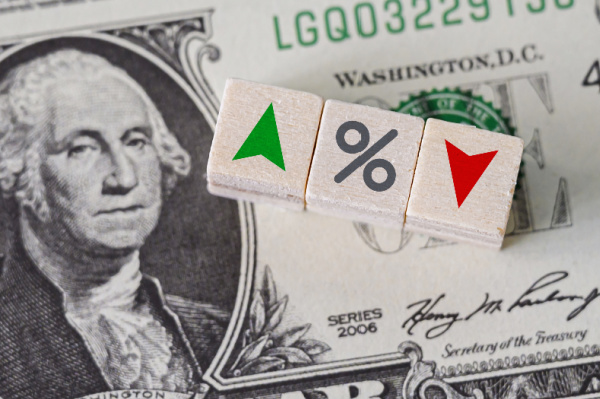In addition to strong farm incomes and commodity prices, the farm economy also benefited from lower interest rates in 2020. This week’s post reviews the latest farm interest rate data from the Kansas City Federal Reserve.
Farm Interest Rates
Since 1977, the Kansas City Federal Reserve has published data on non-real estate farm loans. Figure 1 shows the data on an annual basis. Since interest rates peaked in the early 1980s, agriculture has benefited from decades of declining rates. Since 2009, farm-level rates have been mostly below 5%, only briefly jumping to 5.1% in 2019.

Figure 1. Average Interest Rate on Non-Real Estate Farm Loans, 1977-2020. Data Source: Kansas City Federal Reserve, Ag Finance Databook.
In 2020, efforts to stimulate the U.S. economy pushed interest rates lower. Non-real estate farm loans hit 3.7%, the lowest in 44 years of data. For context, the previous annual low was 3.8% in 2014.
It’s hard to fathom just how low current rates are. In 2000, for example, the annual rate was 9.8%, which would eventually slide to 5.4% by 2004. Of course, 2004 rates were mind-blowingly low until the 2009 Great Recession. In short, when it comes to low interest rates… it’s all relative.
For a closer look at recent data, Figure 2 shows average interest rates on a quarterly basis since 2000. In the first quarter of 2020, before the pandemic, the average interest rate was 4.8%. By the end of 2020, the average interest rate was 3.1%. Prior to 2020, the lowest farm-level interest rates were 3.6% (2015 Q4). For the first quarter of 2021, the average rate was 3.3%. Rates moved significantly lower, quickly, throughout 2020.

Figure 2. Average Interest Rate on Non-Real Estate Farm Loans, Q1 2020 – Q1 2021. Data Source: Kansas City Federal Reserve, Ag Finance Databook.
Implications of Lower Interest Rates
The most obvious implication of lower interest rates is a reduction in the cost to borrow money. The combination of career-low interest rates with longer-repayment terms pushed the annual cost to service $1,000 of debt to career lows in 2020 (which we previously discussed, along with the Debt Service Index, in this AEI Premium article).
A second way low interest rates affect the farm economy is asset valuation. In short: When interest rates are low, buyers are willing to pay more for a given return. We’ve previously written about how farmland values have also benefited from lower interest rates and, in turn, capitalization rates. For 2021, the combination of strong profits and lower interest rates could result in significant upward pressure on farmland values.
A third way low interest rates affect the farm sector is a low hurdle rate for investments. For a given investment – from draining to irrigation or precision ag – and the expected returns, lower interest rates reduce the hurdle of expectation for producers. For example, if an investment generates a 10% return before financing expenses, that investment is much more attractive at 4% interest rates versus 8%, which was observed as recently as 2006-2008. In other words, low interest rate environments might encourage some farmers to pursue investments that would otherwise seem insufficient or not worth it.
Wrapping it Up – Outlook for Interest Rates in 2021
While the farm economy has benefited from “career-low interest rates” for nearly a decade, new lows were again reached in 2020. This came because of 1) stimulus efforts by the Fed and 2) an improved outlook for the farm economy. In other words, the cost for farmers to borrow money got cheaper due to the combination of the Fed’s actions and improved profitability and, in turn, creditworthiness.
The overall interest rate climate has been favorable over the last decade, but it’s not hard to imagine an environment where interest rates in the future are higher than current levels. While most think of the 1980s when they consider a “higher interest rate environment,” we don’t have to look back that far as rates were considerably higher in 2019 (5.1%) or even 2000 (9.8%).
For those interested in reading more, we invite you to review recent AEI Premium content and Ag Forecast Network (AFN) questions considering the prospect of higher interest rates, inflation in the U.S. economy, and farmland values.
